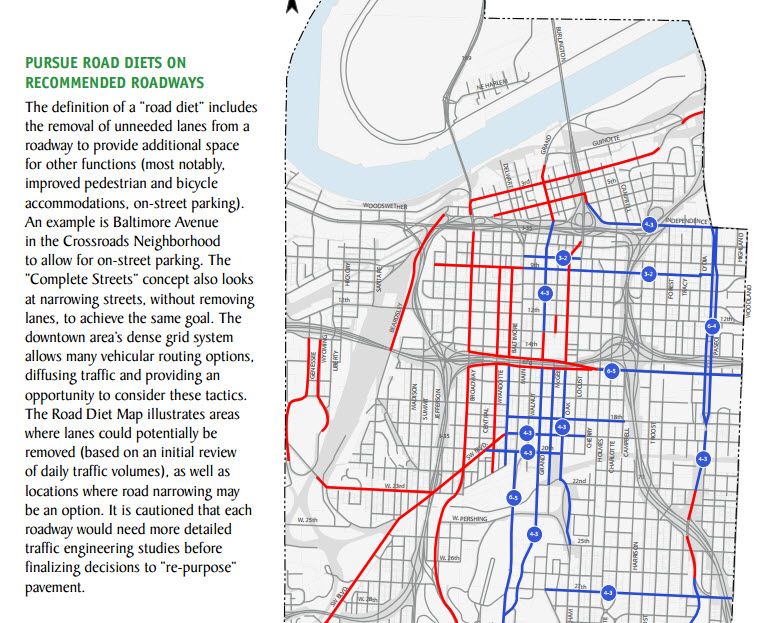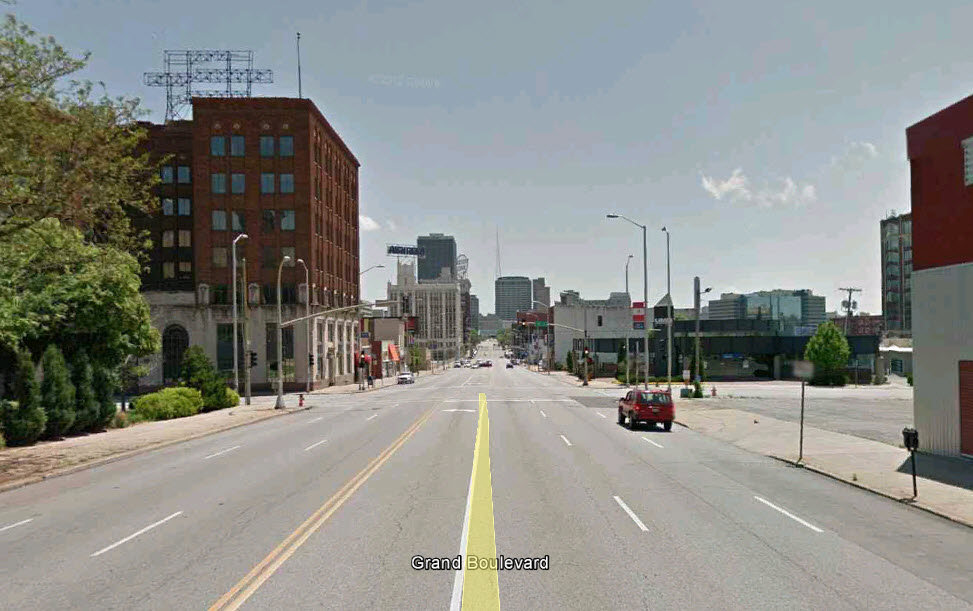Hey, Hey, Kansas City
Last week on my whirlwind tour of the country (Minnesota, Illinois, Massachusetts, New York, Washington DC, Kansas City, Salt Lake City, Naples, Miami then back home to Minnesota), I wrote a short piece about traffic in Kansas City called Streets with no cars. Besides the U2 fans that caught the subtle reference, I was inundated with feedback from two types of people. The first felt the piece was an accurate description of a place they know and are frustrated with. The second thought I was totally out of line.
I was actually rather surprised because I didn't think my observations that KC streets were overly wide, unnecessarily one way, lacked on street parking and facilitated traffic speeds that were excessive was either novel or earth shattering. If fact, if truth be told, I wrote the piece really late at night, was very tired and was more than a little ashamed that I did not have a deeper insight to share. Our readers here have heard this all before and I myself get bored preaching to the choir (not to mention the boredom of the actual choir).
So when my piece was picked up all over the place and feedback started pouring in from new locations, it reminded me that our choir is not a huge percentage of the overall population and that we might need to explain things over and over again as new people find us. Let me start with a smattering of the feedback.
From the people that thought I was accurate in my observations:
Charles, great piece on Kansas City. As a Kansas Citian, I applaud you for calling our city out on it's debilitating planning blunder of the post-WWII era.
---
This is an excellent piece. It is a problem facing many, if not most, Midwestern cities, and the nation as a whole. Many pockets of truth here.... and Kansas City as the site for the next New Partners for Smart Growth conference, next February, an essential read for us all.
---
Sounds like the Kansas City I know. This is my home town and some years ago, it was deemed, by the Sierra Club I believe, as being in the top 5 most negatively impacted by sprawl metro areas (c. 1.6 million pop) in the country. I was just there 2 weeks ago. I can confirm there is a lot of traffic in the suburbs (though not so much downtown) and more big roads are being constructed to cater to the seemingly ever-expanding suburbs.
---
It isn't as if the condition of our built environment is a reflection of our values as much as it is a stubborn legacy of our misguided efforts to "save" downtown in the era of suburbanization. KC led the way in embracing every urban renewal plan we could get our hands on, aggressively welcoming freeways that choked our business district and designing a street grid to serve those freeways.
From the people who thought otherwise:
...maybe he should've stuck around KC longer or been out during rush hour.
---
Or asked a local. Because, you know, there are no greater authorities about any place than two conventioneers in town for a couple of days.
---
Is he really advocating making all intersections downtown uncontrolled? That's the crazy.
---
Chuck, when you put this kind of effort into your blog it's hard for any of us to take you seriously. If you are such an expert you should have access to that data, or at least know where to find it.
That's like me saying "I'm willing to bet that the Royals have a lower OBP that the Yankee's. Far lower. Anyone who has access to such data please prove me right or wrong."
Also, learn what commas are used for.
That last comment was my favorite. I'm notoriously bad with commas, mostly because of how I self edit my work. I put them essentially where I would pause if I were speaking because I edit my work by reading it aloud. Like a speech. It drives my wife -- a professional writer -- crazy because I have commas all over the place. Oh well, at least I would have known to put a comma after "saying". Just sayin'.
There is so much here to talk about, but I want to focus on just one thing today and that is the observation that there is no traffic to speak of in the downtown. At least no volume anywhere near the relation to the amount of infrastructure.
Kansas City recently completed a Greater Downtown Area Plan (adopted in March 2010). I've read it and it is excellent. Later this week I want to go through and point out some of the great things in it and discuss some of the challenges KC faces in implementing it, but for now I'm going to focus on this excerpt from page 45:
I have to say kudos to Kansas City for including this in their plan. I think this initiative could be expanded much more broadly, but this is a really good start. And the logic behind it is solid too. The overall goals of the plan include "doubling the downtown population" (I love specific, measurable goals like that), increasing employment downtown and creating a walkable downtown. This is all good and all necessary.
For example, here's an image of one of the streets they plan to give a road diet. Now, going from what they call four lanes (actually looks like seven lanes) to three lanes seems a little timid (I'm no fan of the center lane), it is certainly a step in the right direction. They could just as easily go down to two travel lanes with parallel parking and then a center median and not impact the (non existent) traffic flow in any appreciable way.
Grand Blvd near 18th Street. Image from Google Earth.Traffic flow projections from MoDOT seem to suggest low volumes in the downtown as well. At the NW and SE corners of the "loop" you have 34,000 and 23,000 cars per day, respectively. For some context, my little hometown of Baxter, MN, (population 8,000) has 47,000 vehicles per day go through its main intersection.
And then I'll get back to simply what my eyes saw. I'm going to release this week's SID.tv video a day early so I can include it in this post. I've called it The KC One Way Coupling. See for yourself -- this was not a one-off shot or a video that has been edited but a representative sample of what eight hours in the downtown was like.
And this is why I found half of that reaction to last week's post odd. There are obviously people who believe strongly that downtown Kansas City has a congestion problem. This is mind blowing to me and all I can suggest is that, if you are one of those people, you need to travel to a place that actually has congestion. Head out to California once and try to drive anywhere. You'll have a new appreciation for just how nicely you have it, and you'll be able to save some money too by not continuing to overbuild everything.
Oh, and share your insights with the Mid-American Regional Council. While the area's regional transportation entity - MARC -- has identified mixed use development as a long term strategy (10 or more years), their immediate strategies include increasing the number of lanes (1 to 5 years), widening roads and providing turn lanes (1 to 5 years), converting major arterials into something they call "super streets" with grade separated intersections (5 to 10 years), creating reversible traffic lanes (1 to 5 years) and building more frontage roads (5 to 10 years). It doesn't sound like they are on board with the whole road diet thing.
Or, at the very least, they are going to abscond with the money that should be invested in the downtown (which has by far the highest return on investment) and spend it on suburban commutes. Not good.
Chill out, Kansas City. I didn't say anything you didn't already know and, if I did, you have bigger problems than me. To continue this conversation, later this week I'm going to share some highlights of their excellent downtown plan as well as explain why shared space intersections are not "crazy".


